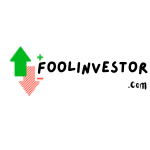Swing trading has emerged as a popular trading strategy that appeals to both seasoned traders and newcomers to the world of finance. Unlike day trading, which involves rapid buying and selling within a single trading day, swing trading allows traders to hold positions for several days or even weeks. This article provides an in-depth understanding of swing trading, its mechanics, benefits, and drawbacks.

Understanding Swing Trading
Swing trading is a trading strategy that capitalizes on short- to medium-term price movements in financial markets. Traders who employ this strategy, known as swing traders, aim to identify and exploit price “swings” or fluctuations within an existing trend. Swing trading can be applied to various markets, including stocks, forex, commodities, and cryptocurrencies.
How It Works –
- Identifying Trends: Swing traders start by identifying prevailing trends in the market. This involves analyzing price charts, technical indicators, and fundamental factors to determine whether an asset is in an uptrend, downtrend, or a sideways trend.
- Entry and Exit Points: Once a trend is established, swing traders look for optimal entry and exit points. They aim to enter positions at points where an asset is likely to reverse its current trend. This could be after a pullback or consolidation phase. Exit points are set to capture profits before the next potential reversal.
- Risk Management: Effective risk management is crucial in swing trading. Traders typically use stop-loss orders to limit potential losses and protect their capital. Position sizing is also essential to ensure that no single trade significantly impacts overall portfolio performance.
- Technical and Fundamental Analysis: Swing traders rely on a mix of technical and fundamental analysis. Technical analysis involves studying price patterns, chart formations, and technical indicators like moving averages and Relative Strength Index (RSI). Fundamental analysis, on the other hand, considers macroeconomic indicators, company earnings, and news events that could influence price movements.
Pros of Swing Trading
- Flexibility: Swing trading doesn’t demand the intense monitoring required by day trading. Traders can maintain full-time jobs or engage in other activities while still participating in the market.
- Potential for High Returns: By capturing intermediate price swings, swing traders have the potential to realize substantial profits, especially during periods of heightened market volatility.
- Less Stressful: Compared to day trading, swing trading is generally less stressful as it doesn’t involve rapid decision-making and constant market watching.
- Suitable for Part-Time Traders: Swing trading is well-suited for individuals who can’t commit to trading full-time, offering a balanced approach to generating additional income.
Cons of Swing Trading
- Overnight Risk: Holding positions overnight exposes swing traders to the risk of unexpected market-moving events, such as earnings releases or geopolitical developments.
- Psychological Challenges: Swing trading requires discipline and emotional control to avoid making impulsive decisions based on short-term price fluctuations.
- Market Timing: Identifying precise entry and exit points can be challenging. Mistimed trades could lead to missed opportunities or losses.
- Commissions and Fees: Frequent trading can result in higher transaction costs due to commissions and fees associated with each trade.
Conclusion
Swing trading offers a middle ground between the fast-paced world of day trading and the long-term perspective of buy-and-hold investing. By capitalizing on short- to medium-term price movements, swing traders aim to achieve attractive returns while maintaining a reasonable level of market engagement. However, success in swing trading requires a solid understanding of technical and fundamental analysis, disciplined risk management, and the ability to manage psychological challenges. As with any trading strategy, individuals should carefully weigh the pros and cons before embarking on a swing trading journey.
Disclaimer: The information provided in this article is for educational and informational purposes only and should not be considered as financial or trading advice.

